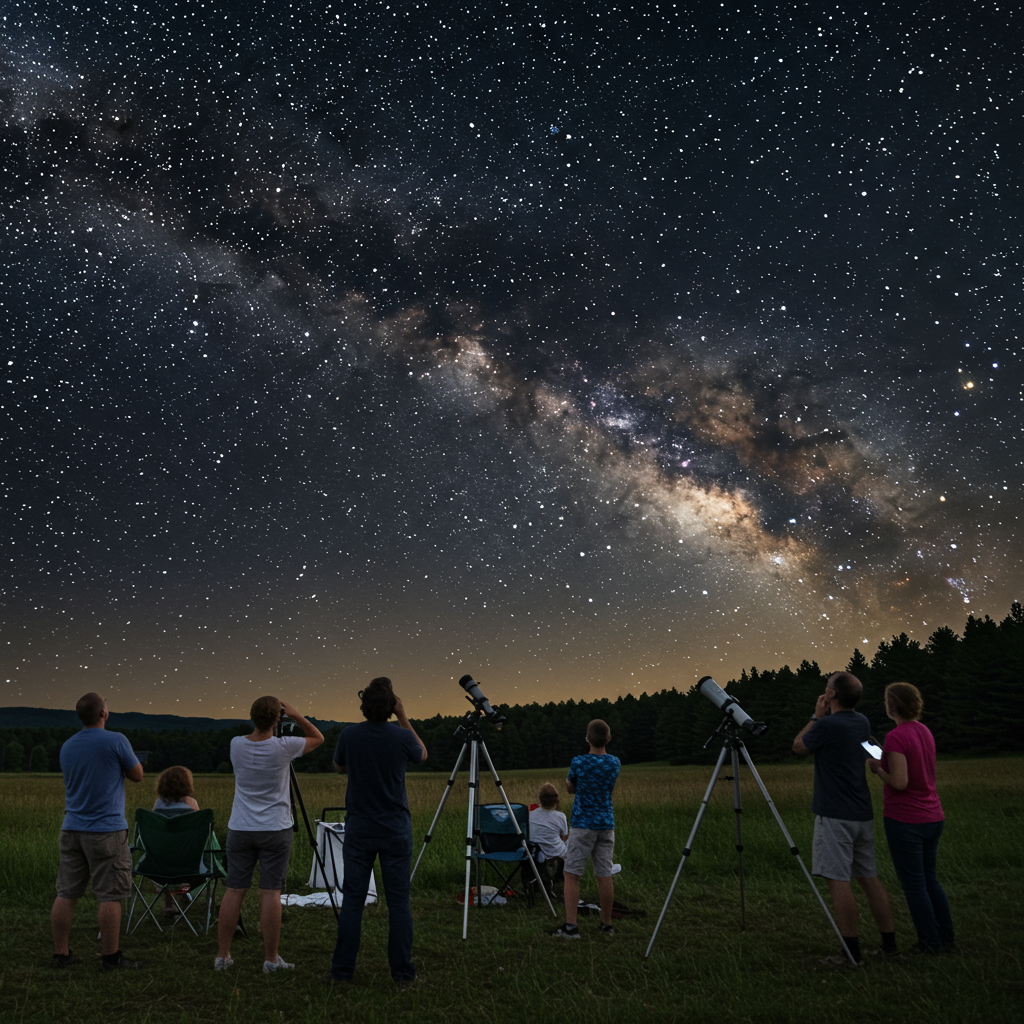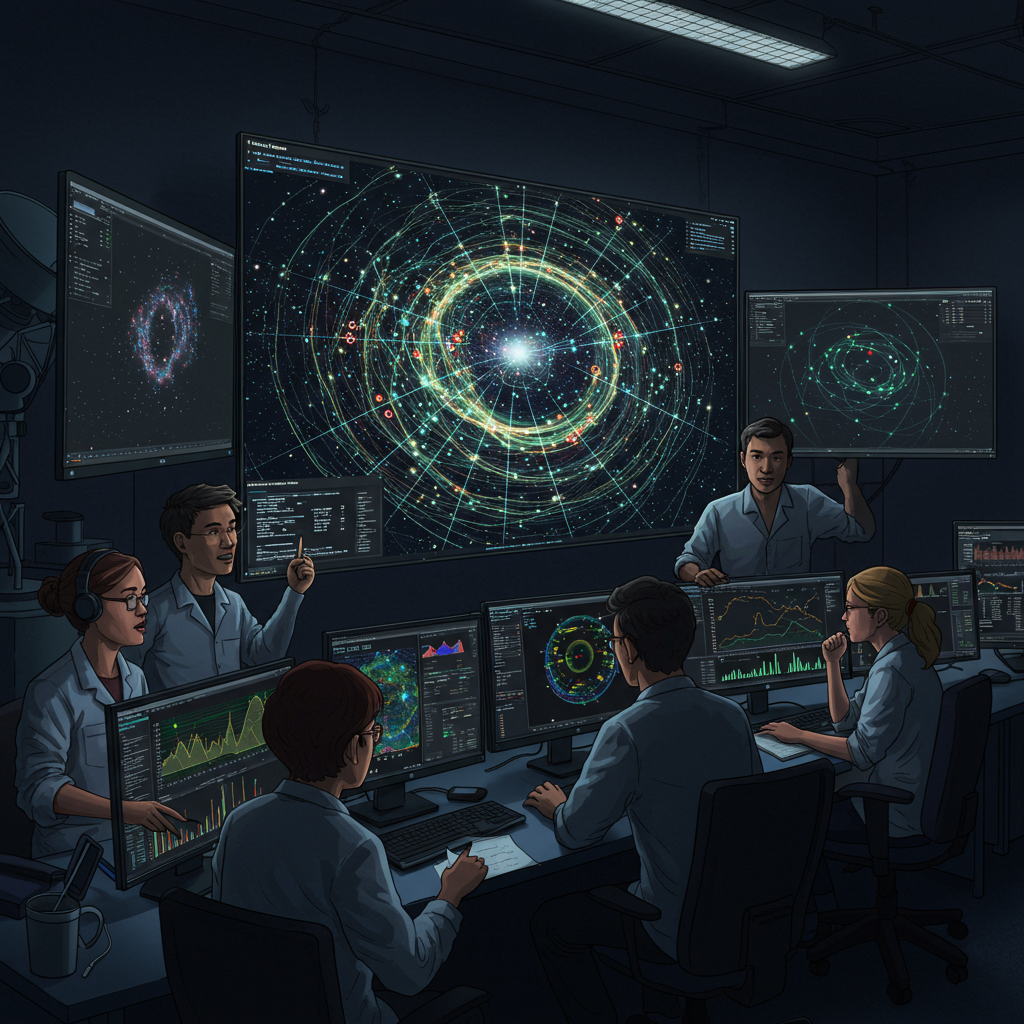Look up this week! The July night sky offers a fascinating display for stargazers and casual observers alike. From planetary alignments to distant star clusters and even our planet‘s own position in space, there’s something for everyone. This guide breaks down the must-see celestial events happening from July 4th through July 10th, providing easy tips on when and where to look. Get ready to explore Earth’s curious distance from the Sun, witness the dramatic half-lit Moon, spot elusive Mercury, and find dazzling planets like Mars, Venus, and Saturn.
Earth’s Curious Aphelion: Farthest from the Sun in summer?
Here’s a little astronomical quirk that often surprises people: Earth reaches its farthest point from the Sun this week, around July 4th. This position, known as aphelion, puts our planet approximately 94.5 million miles away from our star. It seems counterintuitive, doesn’t it? We’re experiencing peak summer heat in the Northern Hemisphere precisely when we’re most distant!
The secret isn’t distance, but tilt. Earth’s axial tilt of about 23.5 degrees is the real driver of seasons. During Northern Hemisphere summer, this tilt causes our half of the planet to lean toward the Sun. This results in more direct sunlight hitting the surface and longer daylight hours, leading to warmer temperatures despite the increased distance. So, next time someone asks about the summer heat, you can share this cool astronomical fact!
Key Celestial Events This Week
The week of July 4th to July 10th is packed with viewing opportunities. Grab your binoculars or simply step outside after sunset to catch these highlights.
First Quarter Moon: Drama on the Terminator (July 5)
On July 5th, the Moon reaches its first quarter phase. This is when exactly half of the lunar disk is illuminated as seen from Earth. While a full moon might seem more impressive, the first quarter offers a truly spectacular view, especially through binoculars or a small telescope.
The line separating the lit and dark halves of the Moon is called the terminator. Along this line, sunlight strikes features like craters and mountains at a low angle, casting long, dramatic shadows. These shadows highlight the lunar landscape in incredible 3D detail, making the surface features “pop.” Look for this captivating half-lit face in the early evening sky until midnight. It’s the perfect time to appreciate the Moon’s rugged beauty.
Mars and Regulus in Close Approach (July 6-7)
Look west after sunset on July 6th and 7th to witness a striking cosmic pairing. The red planet Mars will appear remarkably close to Regulus, the brightest star in the constellation Leo (The Lion). This close approach creates a beautiful color contrast.
Mars shines with a distinct reddish hue, while Regulus gleams with a blue-white brilliance. Though they appear near each other in our sky, they are vastly different objects at immense distances. This conjunction is easily visible to the naked eye, so you don’t need any special equipment to enjoy the view. Simply find a spot with a clear western horizon after twilight descends.
Mercury’s Brief Morning Spotlight (Around July 7)
Spotting Mercury can be a challenge, as it’s the innermost planet and tends to stay close to the Sun in our sky. However, around July 7th, Mercury reaches its greatest western elongation. This is when it appears farthest from the Sun in the morning sky, offering a rare viewing window.
While still requiring a clear eastern horizon, this elongation provides the best opportunity to see Mercury this week. Look low on the eastern horizon about 45 minutes before sunrise. Binoculars can be helpful for spotting this elusive planet initially, but it may be visible to the naked eye under good conditions. This is your chance if you’ve never seen Mercury before!
Moon Photobombs Mars (July 8)
Get your cameras ready! On July 8th, the waxing gibbous Moon will swing close to Mars in the western sky during the early evening. This conjunction presents one of the week’s most photographable moments.
The bright, nearly full Moon will appear next to the noticeably red Mars, creating a compelling visual composition. This is an excellent opportunity for smartphone photography. Use your phone’s night mode and tap the screen to focus on the bright Moon; this will often properly expose the dimmer Mars nearby. Share your captures online and inspire others to look up!
More Celestial Highlights
Beyond the main events, several other fascinating objects grace the July sky.
Saturn Shows Its Rings
The ringed planet Saturn is visible after midnight in the constellation Aquarius. This gas giant displays its iconic ring system tilted well towards Earth, offering a stunning view through a telescope.
If you have access to a telescope, now is a great time to observe Saturn’s magnificent rings. Look towards the southern sky from after midnight until dawn.
Venus Shines as the Morning Star
Venus continues its reign as the brilliant morning star. Look to the eastern pre-dawn sky about 1-2 hours before sunrise.
Venus is the brightest planet and unmistakable once you spot it. It’s a dazzling beacon in the morning twilight.
Milky Way’s Galactic Core
For those seeking darker skies, the glowing core of our own Milky Way galaxy is a breathtaking sight. It rises in the southeast and is best viewed from locations away from significant light pollution.
The diffuse glow of billions of distant stars forms a dusty band stretching across the sky. The brightest part, the galactic center, is a spectacular view for dark-sky enthusiasts from late evening until dawn. Traveling even a short distance away from city lights can dramatically improve your view.
Navigating the July Night Sky
The Moon itself serves as a helpful guide this week, as noted by astronomers. As it waxes from first quarter towards full, its position can help you locate nearby stars.
Around July 7th, the Moon is expected to be near Spica, the brightest star in the constellation Virgo. Spica is a blue-white star located about 250 light-years away. Look for the Moon in the southern sky, and Spica will be nearby.
Later in the week, by July 10th, the waxing gibbous Moon will appear close to Antares. Antares is the brightest star in the constellation Scorpius (The Scorpion). Look due south to find them. Antares is a red supergiant star, famous for its distinctly orangey-red color, visible even to the naked eye. It’s a truly immense star, estimated to be 12 times the mass of our Sun and large enough that if placed in our solar system, it would extend almost to Jupiter’s orbit. Scorpius is a classic summer constellation found near the center of the Milky Way band.
If you have binoculars, try looking just to the right of Antares. You might spot M4, a globular cluster containing thousands of stars appearing as a fuzzy patch.
Deep-Sky Wonders for Equipment Users
If you have binoculars or a telescope, this week offers views of some famous deep-sky objects:
Hercules Cluster (M13): A magnificent globular cluster, a dense ball of hundreds of thousands of stars, located high overhead. It’s a rewarding target for telescopes.
Ring Nebula (M57): A planetary nebula in the constellation Lyra. This colorful cosmic shell of gas ejected by a dying star is a classic target for telescopes.
- Beehive Cluster (M44): An open star cluster in the constellation Cancer. This loose collection of stars is an excellent target for binoculars, appearing as a shimmering swarm.
- www.forbes.com
- whenthecurveslineup.com
Frequently Asked Questions
Why is Earth farthest from the Sun during Northern Hemisphere summer?
This common question has a surprising answer! Earth’s distance from the Sun changes throughout the year because its orbit is slightly elliptical. The farthest point, called aphelion, occurs around July 4th (this week). However, summer heat isn’t caused by closeness to the Sun, but by Earth’s axial tilt. During Northern Hemisphere summer, our part of the planet is tilted towards the Sun, receiving more direct sunlight for longer periods each day, leading to warmer temperatures.
What are the best objects to view with binoculars this week?
Binoculars are perfect for enhancing many sights this week! They are ideal for observing the dramatic shadows and details along the terminator line on the First Quarter Moon (July 5). You can also use them to get a better look at the color contrast between Mars and Regulus (July 6-7). Binoculars are excellent for scanning the Milky Way and finding the Beehive Cluster (M44). If you can find Antares (visible near the Moon on July 10), binoculars can help you spot the fuzzy patch of the M4 globular cluster nearby.
When exactly should I look for Mercury or the First Quarter Moon this week?
Timing is key for these events. The First Quarter Moon occurs on July 5th and is best viewed in the early evening until around midnight. Look for the half-illuminated disk high in the southern sky as the evening progresses. For elusive Mercury, you’ll need to be an early riser. Around July 7th, look low on the eastern horizon about 45 minutes before sunrise. A clear view without trees or buildings blocking the horizon is essential for catching Mercury.
Conclusion
This week, from July 4th to July 10th, the sky offers a diverse range of astronomical wonders. Take a moment to ponder Earth’s distant aphelion, admire the detailed landscape of the First Quarter Moon, witness planetary pairings, hunt for elusive Mercury, and explore distant stars and galaxies with or without optical aid. Whether you’re a seasoned astronomer or just starting out, looking up provides a powerful connection to the cosmos. Step outside, find a clear view, and enjoy the celestial show!




